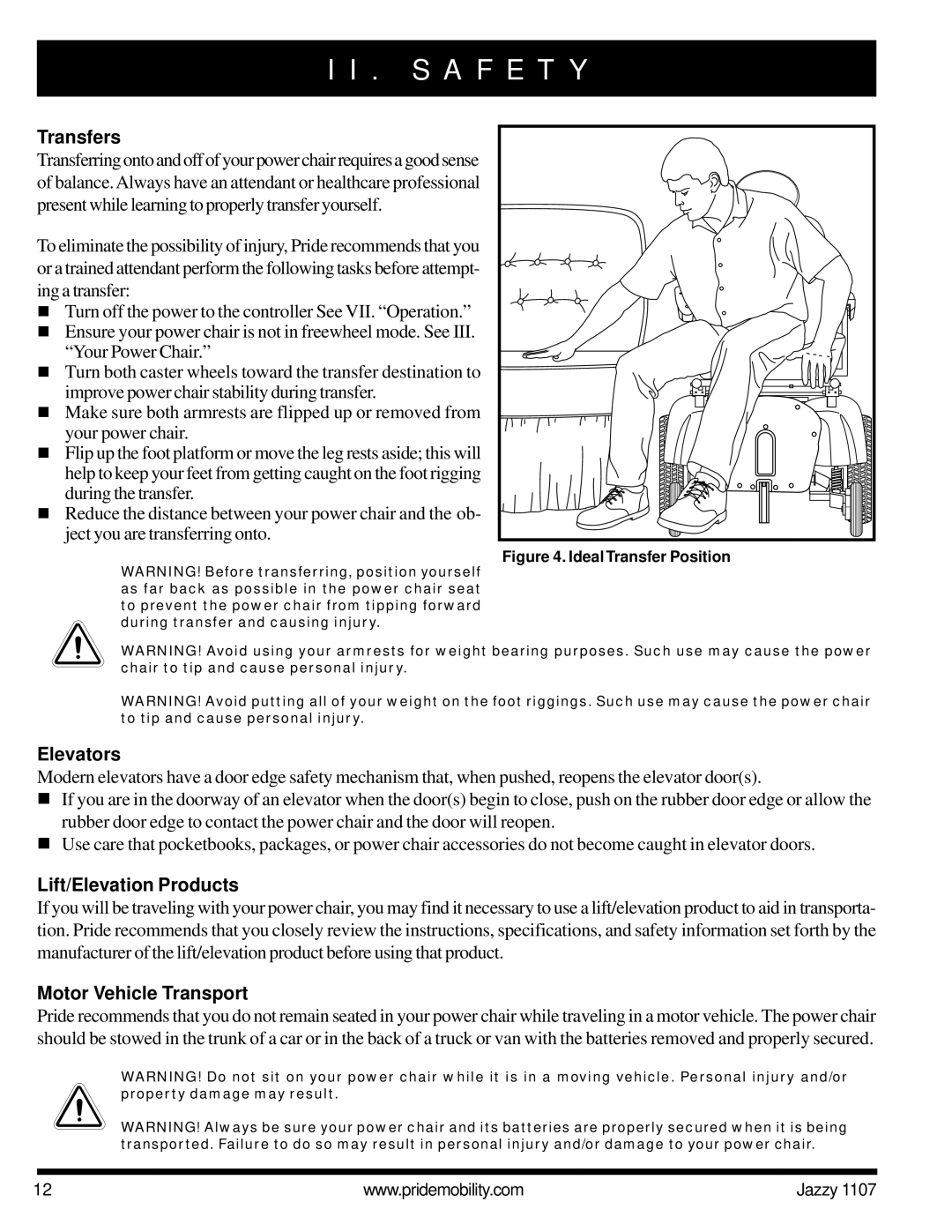
I I . S A F E T Y
Transfers
Transferring onto and off of your power chair requires a good sense of balance. Always have an attendant or healthcare professional present while learning to properly transfer yourself.
To eliminate the possibility of injury, Pride recommends that you or a trained attendant perform the following tasks before attempt- ing a transfer:
! Turn off the power to the controller See VII. “Operation.” ! Ensure your power chair is not in freewheel mode. See III.
“Your Power Chair.”
! Turn both caster wheels toward the transfer destination to improve power chair stability during transfer.
! Make sure both armrests are flipped up or removed from your power chair.
! Flip up the foot platform or move the leg rests aside; this will help to keep your feet from getting caught on the foot rigging during the transfer.
! Reduce the distance between your power chair and the ob- ject you are transferring onto.
WARNING! Before transferring, position yourself as far back as possible in the power chair seat to prevent the power chair from tipping forward during transfer and causing injury.
Figure 4. Ideal Transfer Position
WARNING! Avoid using your armrests for weight bearing purposes. Such use may cause the power chair to tip and cause personal injury.
WARNING! Avoid putting all of your weight on the foot riggings. Such use may cause the power chair to tip and cause personal injury.
Elevators
Modern elevators have a door edge safety mechanism that, when pushed, reopens the elevator door(s).
!If you are in the doorway of an elevator when the door(s) begin to close, push on the rubber door edge or allow the rubber door edge to contact the power chair and the door will reopen.
!Use care that pocketbooks, packages, or power chair accessories do not become caught in elevator doors.
Lift/Elevation Products
If you will be traveling with your power chair, you may find it necessary to use a lift/elevation product to aid in transporta- tion. Pride recommends that you closely review the instructions, specifications, and safety information set forth by the manufacturer of the lift/elevation product before using that product.
Motor Vehicle Transport
Pride recommends that you do not remain seated in your power chair while traveling in a motor vehicle. The power chair should be stowed in the trunk of a car or in the back of a truck or van with the batteries removed and properly secured.
WARNING! Do not sit on your power chair while it is in a moving vehicle. Personal injury and/or property damage may result.
WARNING! Always be sure your power chair and its batteries are properly secured when it is being transported. Failure to do so may result in personal injury and/or damage to your power chair.
12 | www.pridemobility.com | Jazzy 1107 |
